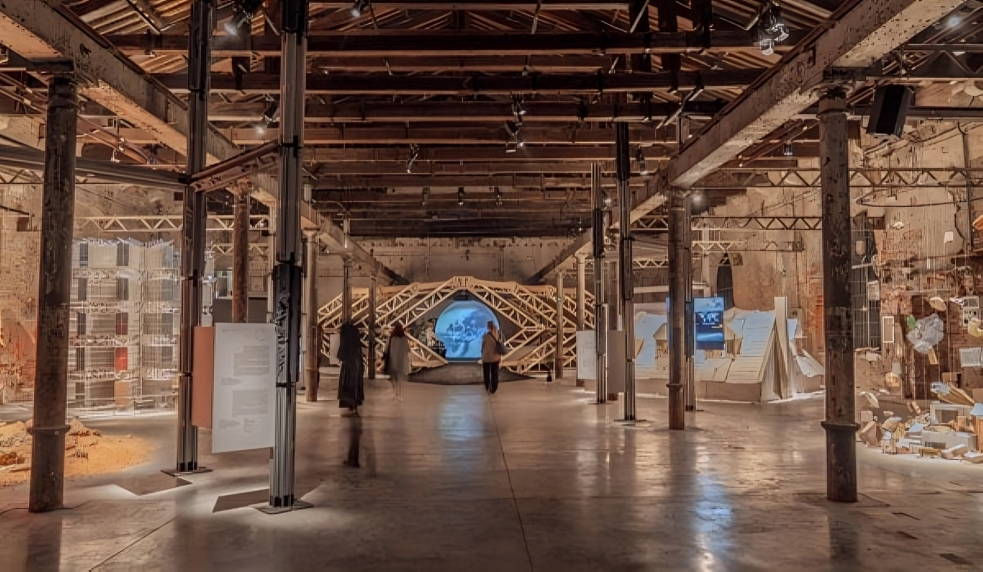

Hydro is putting urban mining in the spotlight as an official supporter of the 19th International Architecture Exhibition of La Biennale di Venezia. At the exhibition, Hydro is featuring two collaborative projects made with 100 per cent recycled post-consumer aluminium, Hydro CIRCAL 100R, one of which is the core structure throughout the venue.

Urban mining, defined simply as “the process of reclaiming raw materials from spent products, buildings and waste,” reframes the waste generated by cities and urban environments, viewing it as a highly valuable resource. Recycling and repurposing valuable building materials, such as aluminium, are at the very core of the urban mining methodology.
“Raising awareness of low-emission, recycled aluminium among architects is key to lowering the industry’s total emissions. It is essential for us to be a key consideration for architects from the outset, as sustainability starts at the drawing board. Being a supporter and presenting our recycled aluminium breakthroughs at the Biennale Architettura 2025 in collaboration with such visionary architects feels like a perfect fit,” says Director of Marketing and Communications at Hydro Extrusions, Asle Forsbak.
The building industry accounts for approximately one-third of Hydro’s revenues and the company has a long history of collaborating with architects. The Norwegian aluminium and renewable energy company is spearheading a sustainable shift in the aluminium industry, pioneering low-emission, recycled aluminium using urban mining practices.
A window into the future
Berlin-based architecture studio sub presents a modular spatial system featuring Hydro CIRCAL 100R aluminium profiles extruded by Hydro as the core structure of the exhibition design throughout the entire Biennale Architettura. The system provides the structural framework for hundreds of exhibition projects exploring the convergence of natural, artificial, and collective intelligence in architecture and the built environment.
“I knew that I wanted to use 100 per cent recycled aluminium for this project and found the ideal partner in Hydro. To me, the Biennale Architettura 2025 is a window into the future, an exploration of where we should be heading and of what is possible. Hydro’s recycled aluminium represents exactly that,” says architect Niklas Bildstein Zaar, co-founder of sub.
After the exhibition, the aluminium profiles, which were once light posts and greenhouse structures, will return to Hydro’s recycling facility in Feltre, Italy, to be recycled once again and transformed into new aluminium products.
Minimising material consumption
The Milan-based interdisciplinary collective of architects, designers and researchers Park, together with Accurat and Politecnico di Milano in collaboration with WICONA by Hydro, present the installation Resourceful Intelligence, investigating strategies to minimise material consumption by repurposing and enhancing the value of existing resources within the urban environment.
“The building sector is a major consumer of raw materials, significantly affecting ecological, economic and social equilibrium. Architects must shift the paradigm, transforming waste into a resource and embedding it within both the design process and its outcomes,” says Filippo Pagliani, Founding Partner of Park.
On a global scale, the buildings and construction sector is by far the world’s largest emitter of greenhouse gases (source: UNEP), accounting for a staggering 37 per cent of global emissions. Hydro CIRCAL 100R, the world’s first industrial-scale recycled aluminium made entirely from post-consumer scrap, leads the way with a record low 0.5 kg Co2e per kilo aluminium. Hydro’s project at the Biennale Architettura 2025 comes less than a month after Hydro completed their “R100” exhibition at Capsule Plaza during Milan Design Week.
Note: This article has been issued by Norsk Hydro and has been published by AL Circle with its original information without any modifications or edits to the core subject/data.
Responses








